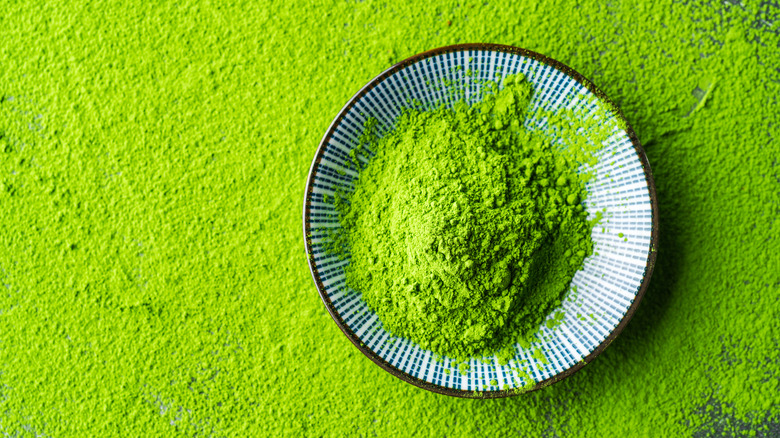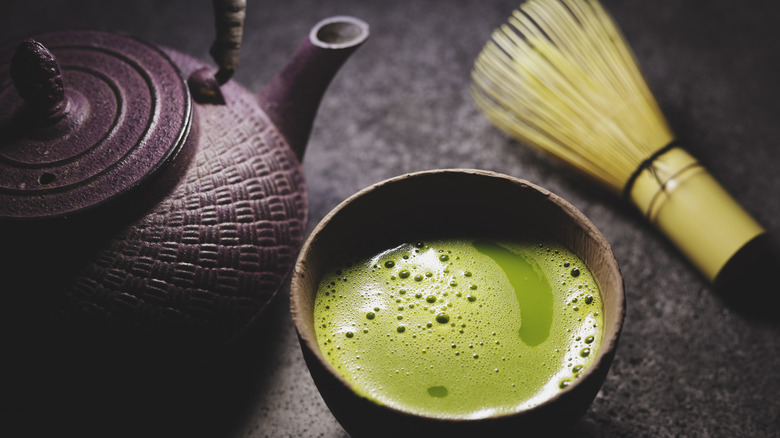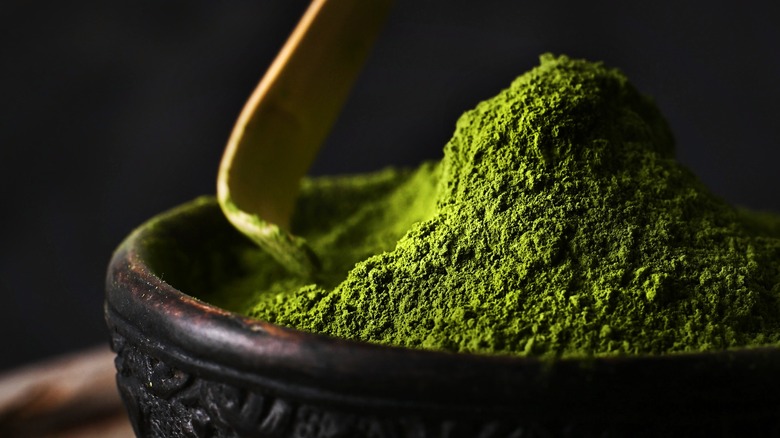The Difference Between Culinary And Ceremonial-Grade Matcha
If you've ever ordered a matcha latte at your favorite coffee shop, you might have seen the barista pull out a bag of vibrant green powder to make your drink. That bag will either say "culinary-grade matcha" or "ceremonial-grade matcha". If you're familiar with this distinction, you might be a little miffed seeing the culinary grade stuff come out. After all, you're spending six bucks on a latte, why not make a ceremony out of it? The truth is, these are just words. It's like the wild west of industry greenwashing; these words are used to make people think that something is better than another thing — and further, be willing to pay a premium for it.
One could argue that all matcha is ceremonial grade. There is no industry standard, and there are no regulations on the quality of matcha that dictates that some be called ceremonial grade. By this metric, the inverse is also true — all matcha is culinary grade if you want it to be. This is certainly not to say that all matcha is created equally — absolutely not. However, there's no reason to pay out the nose for something that isn't appreciably better than the reasonably priced matcha, unless it's actually better. But how would you know?
What is good matcha?
What makes good matcha? You can usually tell if you've got a good quality matcha just by looking at it. There are a variety of colors and textures to matcha, ranging from brownish olive to bright, neon green. Darker, earthier matcha is going to be considered more culinary in its application, whereas the more vibrantly green-colored matcha is considered higher quality, has a velvety powdered consistency and is rich in umami flavor. Higher-quality matcha is balanced in astringency and doesn't taste as bitter as the lower-grade stuff.
When choosing a matcha, you have to consider how you intend to use it. Are you drinking it in the ceremonial style with hot water and a bamboo whisk? Or are you making matcha green tea ice cream? You may very well end up using the same matcha for both, but your choice should come down to personal preference and taste. If you're baking with matcha, you will probably be better served going with a lower grade powder, as baking changes the flavor profile and the quantity used is much higher in a cake than in a latte.
Throwing shade for higher grade
The quality of matcha is measured by a few different factors: First, how it was grown and harvested — if the matcha was grown in decent shade, that changes the amino acids in the chlorophyll and will result in a richer, more vibrant powder. The leaves harvested at the top of the tea plant (rather than near the bottom) are going to produce higher-quality matcha as well. The time of year has a huge influence on the matcha too, as leaves harvested in early spring are full of nutrients from the previous winter and are more tender and flavorful.
How fresh the matcha is affects its color. Matcha that has been sitting in storage for too long will oxidize and get a yellowish tint, making it less flavorful and rather dull-looking. Unfortunately, in many cases you can't gauge the quality or flavor of matcha until you experience it, so buying it online can be tricky. Even when you find a matcha that you like, there can be differences from package to package. But whether you're trying to get a mega caffeine boost in the morning, or want to reap the many health benefits of this electric green powder, you'll really just have to go find the matcha that speaks to you directly — and don't get hung up on the labels.


